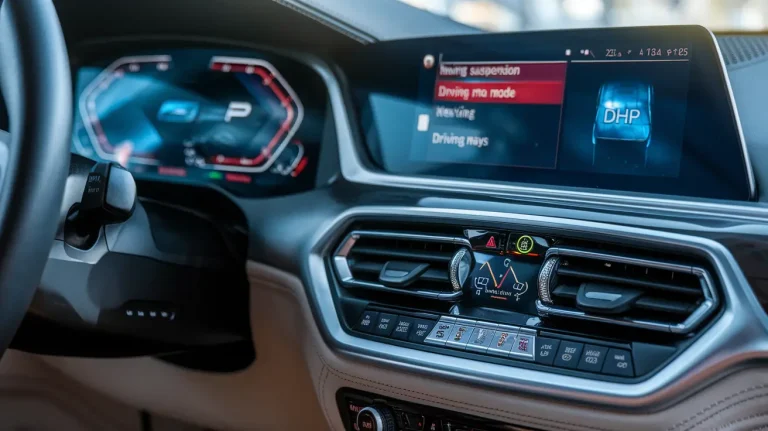Issues and Solutions to Improve N55 Reliability Engine
The BMW N55 engine first appeared in 2009 as the successor to the popular N54 turbocharged inline 6-cylinder. Over the past decade, the 3.0-liter N55 has proven to be a fairly reliable modern turbocharged engine, especially compared to its notorious predecessor. However, no BMW powerplant is without its Achilles’ heels. Even the mighty N55 is susceptible to certain reliability issues that can leave drivers stranded if not addressed promptly.
So what are the most common N55 reliability problems owners should look out for? And how can you improve longevity to get the most miles out of your N55-powered BMW?
In this detailed guide, we’ll cover the major failure points, maintenance tips, and best mods to transform the N55 into a Lexus-like tank. Let’s start with a quick overview.
An Introduction to the N55 Engine
The N55 engine debuted in the 2009 7 Series and later became the staple inline 6 across many BMW models through 2020. It uses a single twin-scroll turbocharger to produce 300-335 horsepower in most applications. Direct injection and Valvetronic variable valve lift also highlight the performance and efficiency enhancements over past BMW inline 6’s.
In stock form or with conservative tuning, the N55 has proven to be a robust engine capable of racking up serious mileage when properly maintained. However, as with any modern direct injection turbo motor, the N55 is still susceptible to issues like carbon buildup, thermostat/water pump failures, oil leaks, and turbo failures when pushed hard.
By religiously following maintenance best practices and proactively upgrading common failure points, N55 engines can provide many problem-free miles of enjoyable, reliable daily-driving and spirited weekend fun. This comprehensive reliability guide will explore the most prevalent N55 issues and provide tips to maximize longevity.
Common BMW N55 Engine Reliability Issues
While generally stout for a turbocharged engine, the N55 still experiences a handful of recurring issues and design flaws that can put a damper on long-term reliability:
Carbon Buildup
One of the most widespread problems on direct injection engines like the N55 is intake valve carbon buildup. Without port fuel injection cleaning the valves, carbon deposits accumulate rapidly on the intake valves, ports, and cylinders. This leads to symptoms like:
- Loss of power
- Rough idle
- Misfires
- Reduced fuel economy
Walnut blasting is the most effective repair to fully remove heavy carbon buildup. Some deterrents like catch cans, fuel system cleaners, and upgrading the high pressure fuel pump can help slow deposit formation.
Thermostat and Water Pump Failures
The factory plastic impeller water pumps and thermostats are common failure points, usually leaving drivers stranded with an overheated engine around 60-80k miles. Upgrading to a quality metal impeller water pump and installing a thermostat with a higher temperature range can preemptively solve these cooling system Achilles heels.
Oil Leaks
Oil leaks are never a surprise on higher mileage BMW engines. On the N55, the most notorious leak sources are:
- Valve cover gasket
- Oil filter housing gasket
- Oil pan gasket
Replacing the valve cover and oil filter housing gaskets every 60k miles or when spots early can significantly reduce oil leaks. Properly torquing the oil pan bolts is also essential to avoid leaks here.
Turbo Failures
The N55’s single twin-scroll turbocharger generally holds up well to conservative tuning. However, too much boost can quickly overwhelm the turbo, leading to premature wear of the bearings and shaft play. Quality tuners will provide parameters to avoid overtaxing the stock turbocharger. An upgraded turbo may be advised for aggressive tuning.
Fuel Injector Failure
While not extremely common, the N55’s high pressure fuel injectors can fail prematurely, especially if subjected to excessive heat cycles from aggressive tuning or fuel dilution from oil leaks. Replacing the injectors with updated replacements can improve reliability.
High Pressure Fuel Pump Camshaft Lobe Wear
The N55 HPFP is driven by the exhaust camshaft. Excessive wear on this lobe can cause fuel pressure delivery issues. An upgraded aftermarket pump with billet camshaft lobe can improve durability with tuned N55 builds.
Rod Bearing Wear
Under high stress from aggressive tuning, the N55’s connecting rod bearings are susceptible to premature wear, eventually leading to engine failure if clearances get too loose. For stock engines or mild performance builds, rod bearings can reliably last over 100k miles.
Now that we’ve covered the major vulnerabilities of the N55, let’s explore maintenance and upgrade solutions to address these common problems and improve reliability.
Preventing Intake Valve Carbon Buildup
Carbon buildup on intake valves is an inevitable issue with all direct injection engines, including the N55. Here are some tactics to reduce and remove deposits:
- Use Top Tier Gas and Fuel System Cleaners – Minimize carbon formation by only using Top Tier rated gasoline and adding a fuel system cleaner like BG 44K during oil changes
- “Italian Tuneups” – Extended sessions of high RPM driving allows engine heat to burn off some carbon deposits passively
- Walnut Blasting – Every 50-80k miles, consider having the valves and intake ports professionally walnut blasted to remove heavy carbon buildup for improved engine performance
- Water Methanol Injection – WMI sprayed in the intake port can keep valves cleaner via its cleaning properties
- Catch Can – An oil catch can reduces oil blow-by in the intake from the crankcase and can moderately reduce carbon accumulation
- Upgrade the High Pressure Fuel Pump – A higher flowing HPFP can provide improved fuel atomization for cleaner combustion
While annoying, staying vigilant with preventative cleanings, quality fuel, and upgraded hardware can keep N55 valves much cleaner than neglecting the issue.
Thermostat and Water Pump Maintenance
Two common cooling system weak points on the N55 are the thermostat and water pump’s plastic impeller. Failure of either part usually leaves drivers stranded with an overheated engine. Here are some important maintenance tips:
- Replace the thermostat – The factory thermostat tends to fail around 60-80k miles. Install an upgraded thermostat with a higher 105-110C temperature range for improved reliability
- Use a metal impeller water pump – The plastic impellers eventually warp and fail. A quality metal impeller upgrade avoids this issue
- Inspect hoses and seals – Check the condition of all coolant hoses, the expansion tank, and gaskets. Replace any deteriorated rubber components.
- Flushing the cooling system – Periodically flush the cooling system and use a proper coolant/distilled water mix for cleanliness and maximum heat transfer.
Following this critical preventative maintenance drastically cuts down on cooling system issues, keeping N55 engines running cool.
Oil Leaks – Problem Areas and Solutions
Oil leaks become more prevalent as engines accumulate mileage. Here are tips to reduce the most common N55 leak sources:
- Oil filter housing gasket – BMW improved the housing’s design in later production years. Consider upgrading to the latest version or quality aftermarket gasket.
- Valve cover gasket – Inspect around 60k miles and replace when any oil seepage is visible. Use a quality gasket and proper torque procedure.
- Oil pan gasket – Remove the pan and ensure the bolts are torqued to spec to avoid leaks here. Consider using RTV sealant during reassembly for additional protection.
- Front crankshaft seal – Worn seals here can also cause oil to drip from the front of the motor. Resealing the crank pulley/harmonic balancer will address leak issues.
Catching oil leaks early and using quality replacement gaskets significantly reduces future oil consumption and dirty engine bays.
Tuning – Stock vs. Modified Reliability Comparison
Moderate power upgrades via tuning can make the N55 more fun to drive when done properly. Here are some tuning reliability considerations:
- The N55 tends to be quite robust up to about 400-450whp in factory internals when using quality fuel, tuning, and monitoring engine health.
- Conservative tunes focusing on smooth power delivery rather than peak dyno numbers are best for longevity.
- Any tuning demands more stringent maintenance like frequent oil changes, the best fuel, etc. to account for the added stresses.
- Aggressive tuning above 500WHP requires built internals like forged rods, pistons, stronger fueling, etc. to ensure durability.
Reputable tuners like MHD, BM3, and other pro tuning shops offer both OTS maps and custom tunes dialed in for your specific N55 build and reliability goals.
Best Reliability Upgrades for the N55 Engine
Beyond proper maintenance, here are some of the best hardware upgrades for improving N55 longevity:
Oil Catch Can
A catch can reduces blowby pressure in the crankcase and intake tract, helping minimize carbon buildup and oil consumption. Popular options are from Burger Motorsports, ETS, and CP-E.
Intercooler Upgrade
The stock N55 intercooler is quickly overwhelmed leading to heatsoak. A larger aftermarket intercooler maintains charge temps for consistent power delivery and reduced engine stress. Look into CSF, Wagner, and VRSF intercoolers.
High Pressure Fuel Pump
As mentioned, upgrading to an aftermarket HPFP improves flow rate for power and offers a billet camshaft lobe to eliminate the possiblity of the expensive factory pump failing. Choices include Pure, VRSF, and CP-E’s Stage 3 pump.
RPM Actuator
This plug and play device fools the DME into allowing higher RPM limits for more tuning flexibility without hitting the factory rev limiter. Useful for aggressive tuning builds.
Rod Bearings
For tuned N55 builds approaching the 400whp mark, having the rod bearings inspected and replaced with tighter tolerance bearings ensures proper clearances as power increases.
Built Engine Internals
Forged pistons, rods, main studs, gaskets, and stronger cylinder heads are advisable for extremely high horsepower N55 builds exceeding 500+whp to ensure durability.
Using quality parts and smart staged upgrades tailored to your horsepower goals is key to building a reliably powerful N55 engine.
Overall Tips to Improve BMW N55 Reliability
Here are some final best practices that improve longevity for both stock and modified N55-powered BMWs:
- Use quality full synthetic oil and shorter oil change intervals of 5-7.5k miles. Avoid cheap oil.
- Address any minor leaks or issues early before catastrophic failures occur.
- Opt for OEM BMW or quality aftermarket parts over cheap components when repairs are needed.
- Upgrade common failure parts like pumps and gaskets proactively.
- Follow recommended fuel octane ratings – use premium 91+ octane only.
- If modifying the engine, choose a reputable tuner and follow their guidance to avoid unsafe tuning parameters.
- Monitor engine health and watch for signs of premature wear when tuned more aggressively.
While the N55 engine offers pretty solid reliability versus many of BMW’s other modern turbocharged six cylinders when properly maintained, it still demands meticulous care and preventative maintenance to reach high mileages problem-free. Just like caring for any performance luxury automobile, addressing issues promptly, using quality components, and smart preventative upgrades will protect your N55 and wallet from unexpected repairs down the road.
Follow this comprehensive guide and your BMW N55 will provide many trouble-free miles of Bavarian driving joy.







